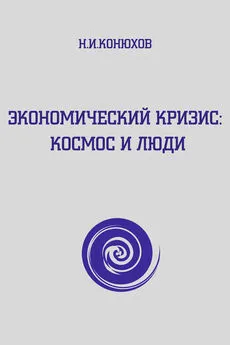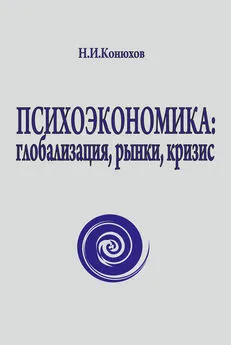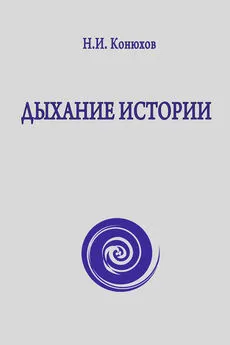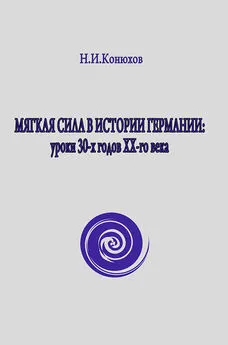Николай Конюхов - Psychoeconomics: globalization, markets, crisis
- Название:Psychoeconomics: globalization, markets, crisis
- Автор:
- Жанр:
- Издательство:неизвестно
- Год:2018
- ISBN:нет данных
- Рейтинг:
- Избранное:Добавить в избранное
-
Отзывы:
-
Ваша оценка:
Николай Конюхов - Psychoeconomics: globalization, markets, crisis краткое содержание
Psychoeconomics: globalization, markets, crisis - читать онлайн бесплатно ознакомительный отрывок
Интервал:
Закладка:
17. Психоэкономика . М.: 2012. – 2-е изд. – 540 c.
18. Психоэкономика: глобализация, рынки, кризис. М.: 2012. – 300 c.
19. Шизоидность: ?! М.: 2011. – 352 с.
20. Словарь-справочник по психологии. – М.: 1996. – 160 с.
21. Акмеология и тестология. М.: 1996. – 380 с. И др.
22. Анализ и прогноз фондовых рынков. https://bemkon.ru/Fragments/Article14.aspx
23. Формула революций, массовых протестов: открытия российских ученых https://bemkon.ru/Fragments/Article17.aspx
24. In resonance with cosmic energies: terrorism and marketing [Текст] / Konyukhov N., Arhipova O., Konyukhova E., Hayrullin A. ; Research and training center Biruch, Research center Bemkon. – Moscow: [s. n.], 2018. – 284 p.
25. Cosmic energies and mankind: graphs for reflection [Текст] / N. I. Konyukhov ; Research and training center Biruch, Research center Bemkon. Moscow: Гарант, 2018 – 349 p.
26. Psycho-cosmic energies and Russia [Текст] / Konyukhov N. I. ; Research and training center Biruch, Research center Bemkon. Moscow: Pero, 2017. – 219 p.
27. Psycho-cosmic energies and economic growth [Текст] / Konyukhov N., Arhipova O., Konyukhova E. ; Scientific and research centre "Bemkon. Moscow: Перо, 2017. – 235 p.
28. Economic crisis. Chapters from the book. / N.I. Konyukhov . – М.; Publishing Office Pero, 2015. – 240 p.
29. Economic crisis: Cosmos and people / N.I. Konyukhov . – М.; Publishing Office Pero, 2014. – 221 p.
30. Psychoeconomics: Clobalization, Markets, Krisis. N.I. Konyukhov – М.; Publishing Office Pero, 2014. – 309 p.
31. Cosmic energies and mankind: graphs for reflection. [Text] / N.I. Konyukhov. – – M., 2018. – 371 с.
Chapter 2. Psychotypological changes in the elite, the economically active population as an influential factor in socioeconomic processes in the world
Society develops erratically. At more critical and stressful points of development, people’s psyches stretch and are overstretched. And it happens that those in the middle of such stress exert the greatest effect on the environment at critical times of social development. This usually means people with accentuation characteristics. Most of the Russian tsars, according to the psychiatrist A. Kovalevsky, were people with traits that deviated from the norm. Most of successful prominent managers in Russia, according to the research of S. Epifantsev, have traits of accentuation. Cesare Lombroso’s opinion about talented people likewise concerns the fact that they are, to a great degree, accentuated, and frequently with psychological deviations. People have various personality traits, in some languages the number of them is in the tens of thousands. But what is amazing, regardless of the historical period in a state of stress or overstress, is that people arrive at the same deviations from the norm. These deviations and the typology of people with psychological deviations are studied by psychiatrists. In our research, the analysis does not concern psychotypes with psychological deviations, but rather the variable personality traits and their typology. But these variable personality traits are often grouped in clusters that are close to psychological deviations. These are often accentuated people.
2.1. Basic psychological terms
Terms and their meanings are the language of science. Without a precise language it is impossible to communicate ideas precisely and clearly.
Considering the inclusion of English-speaking scholars in the discussion, an English translation of the definitions of terms is presented.
Hysteroid accentuation– a type of accentuation where the personality at the level of dynamic stereotypes is increasingly emotional, impressionable, “high strung”, and loves the attention of people and cannot be without it. In the process of practical work, he may attract attention to himself by committing acts that others will not commit (such as to pitch some idea, then unexpectedly swear at someone, then compliment them, then not agree to something, then complain to an older supervisor in front of everyone, etc.). And these actions are dictated less by the substance of the problem than by an unconscious wish to attract attention. The hysteroid type of accentuations or the demonstrative type strive for attention and acknowledgement by those around him by any means available.
Paranoiac accentuation– the psychotype of a person for whom it is characteristic to strive toward a goal, at times to the detriment of those around him. The main characteristics of such people are their difficulties in controlling the strong emotional reactions that occur, and stability, perseverance, single-mindedness, and the presence of persistent orientation to attaining goals (at times without any good reason), right up to formation of predominant ideas or relationships. Most successful business leaders are accentuated paranoiacally. Their predominant idea is to start the ball rolling, get to work. The paranoiac or “trapped” type of accentuations are stuck on something under the influence of a “predominant idea”.
Resonant psychotype – one of the basic psychotypes of the gainfully employed population, which ensures the success of the society and of the people in a given historical epoch, in given types of activity or in a given specific circumstance… Usually these are domain experts, frequently with traces of paranoia.
Postresonant psychotype– a type of person who imitates the resonant psychotypes and learns from them. Usually these are social motivators, often with traces of obsessiveness.
Post-postresonant psychotype– a psychotype which psychologically and logically comes to replace the postresonant psychotype. Most often these are social motivators, often with traces of hysteria.
“Domain expert” metaprogram– a psychotype and simultaneously a strategy for satisfying a human need, conditioned by the presence of corresponding systems of dynamic stereotypes, through analyzing and managing technological processes, owing to personal work in an activity whose purpose is domain specific (image, object, process etc.).
“Social motivator” metaprogram– a psychotype and at the same time a strategy for satisfying human needs, conditioned by the presence of corresponding systems of dynamic stereotypes, through analyzing and managing other people, and through personal work or activity in a system of interpersonal relations, whose aim is related to forming needed motivation or behavior of other people.
People change under the influence of social and natural factors, including solar activity. At certain peaks of solar activity, people can become highly agitated and particularly emotional. They become increasingly hysteroid and psychopathic.
All of the Russian revolutions (1905, 1917, 1991) coincided with solar peaks that were the largest in a decade.
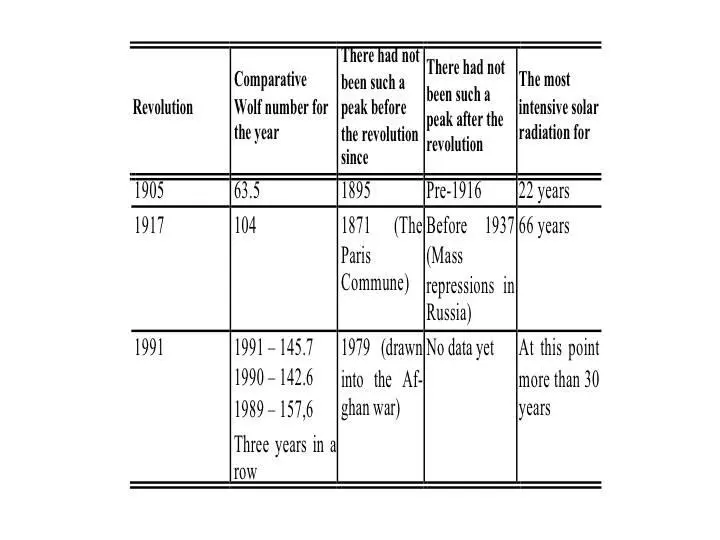
In years of solar tranquility, the average annual number of such sunspots is small – 10 – 20.
Peaks of solar activity are also peaks of social protest and revolution. Social roles that had previously been accepted (stable social dynamic stereotypes) – were swept away. Society was ready to accept new roles, to begin to live according to new customs, traditions, and laws. In the language of the physiology of higher nervous function, the apparatus for closing and opening nerve impulse circuits has succumbed to change to a much greater degree than usual.
People are capable of behaving and changing their dynamic stereotypes to a much greater degree than usual. The influence of hysteroids and psychopathic personalities automatically becomes stronger and more relevant. They have higher sociometric ratings and exert a more effective influence on those around them than usual. Revolution, for the hysteroids that take part in it, frequently becomes the moment of their fullest emotional satisfaction – on the barricades, at the center of attention, all in one emotional outburst… Even actors don’t get such an emotional outburst on the stage.
One might counter that not all peaks of solar activity end up in revolutions. True enough. Several peaks of solar activity have not ended up in revolution in Russia.
There are two exceptions: 1991 (the incursion of troops into Afghanistan) and 1957–1958. The entry into Afghanistan turned the agitation of people and their heightened psychopathy into an emotion about “fulfilling international obligation”. Nevertheless the decision itself was in large measure impulsive.
But the period from 1957 to 1958 deserves a separate analysis. The atypical behavior of the Soviet people must be explained by the fact that after the war everyone got used to being compliant, and firm dynamic stereotypes were engineered to obey orders and meet the demands of the powerful agencies, while at the same time (!) the functioning of the apparatus opening and closing conditioned reflexes became more active. This suffices to minimize the effect of the Sun for up to 20 years. That is on the one hand.
On the other hand, the influence of the country’s authorities on the people was emotionalized. The people were emotionalized. The accumulated psychopathic energy poured out into emotions because of the denouncing of Stalin’s personality cult, the launch of the first sputnik, the World Youth Festival, the construction of new housing – “khruschevki” and so on and so forth. Steam was let off with the help of these and other events.
Rates of economic development (N. Kondratiev curve) are linked to solar activity.
Of the 12 peaks of solar activity since 1870, in 8 cases economic development slowed after peak solar activity passed, and at each stage of growth of the Kondratiev cycle, a peak of solar activity preceded maximization.
An economically active population first becomes increasingly emotional, then returns to a normal state. In the normal state, the economic laws discovered by science are active. In a psychopathic state of the population and the subjects of economic activity, they are deformed depending on the degree of psychopathization of both the economically active population as well as the elite.
2.2. Causes of the crisis today: analogies in the past
The wavelike change in people’s psychotypes and the economically active population is superimposed on the wavelike change in the quality of the elite. In countries that are developing under the influence of endogenous factors, that is, that depend on the influence of neighboring countries and external factors to a lesser degree than others, the quality of the elite changes radically in the span of three generations. Studies by F. Braudel and other scholars show that it has happened like this for millennia.
The psychotypes of the elite and economically active population are multifaceted. Let’s take just one facet: the relationship between “domain experts” and “social motivators”. People think with metaprograms.
The “social motivator” is oriented toward the opinion of other people, while the “domain expert”, when making a decision, is oriented toward technological processes, which he tries to manage.
The “social motivator” is oriented toward the opinion of other people, while the “domain expert”, when making a decision, is oriented toward technological processes, which he tries to manage.
Читать дальшеИнтервал:
Закладка:

